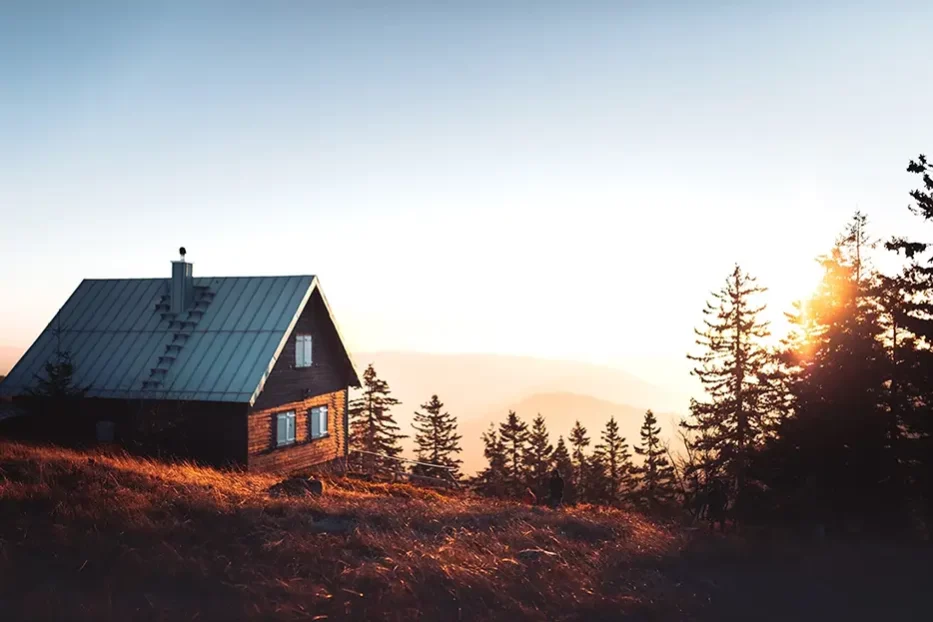
hospitality at home
Twenty years ago, entering a stranger’s home for an overnight stay was considered downright absurd. Nowadays, businesses such as Airbnb and VRBO utilize the very idea of staying in a stranger’s home to dominate the hospitality industry with an estimated $169 billion market valuation.
Short-term stays have ultimately changed the way people travel and experience the world. Now that homeowners have a platform to safely — and profitably — open their doors to worldwide travelers, modern hospitality has shifted its lens into a more domestic atmosphere.
Whether guests are choosing their stays based on new remote work policies or pursuing offbeat accommodations (hello, treehouses), travelers are seeking more impressive stays rather than booking a hotel room with the standard amenities. By reimagining the fundamentals of hospitality to go beyond the standard double queen bed hotel room, homeowners can generate supplemental income and encourage travelers to re-book.
the space
Tiny home, guest room or entire apartment? The space that encompasses a short-term rental varies from home to home, creating different scenarios and key factors to examine before considering a listing on Airbnb or VRBO.
Entire homes allow renters full and private use of the entire dwelling without having to share the space with residents or other guests. Entire homes give guests more freedom to feel comfortable but can often lead to pricey cleaning fees.
Tiny homes or accessory dwelling units strike the balance between guest privacy and hefty cleaning fees with a separate, yet smaller living area unattached to the main residence.
Get the Word on the micro-movement making a big impact and make the most out of ADU zoning.
In-law suites are independent living units attached to the home that include a separate living area, kitchen and at least one bedroom and bathroom. Short-term rentals in an in-law suite enjoy the conveniences of privacy and host proximity, but hands-off hosts may be better suited to an accessory dwelling or entire home rental.
Guest rooms are the most common and affordable short-term rental category, as most homes have an additional bedroom that can be reserved with little to no setup costs to the resident. However, navigating a shared bathroom and kitchen situation with strangers can be tricky. As the most interactive category of short-term rentals, residents’ daily living and cleaning routines are often impacted without a wide profit margin.
the basics
Remove all personal items. Guests should enter a space feeling like they can settle in — not as if they are imposing. Remove items such as family photographs, clothing and jewelry.
Keep it clean. Now more than ever, guests are noting the cleanliness of a short-term rental with a microscopic lens. Thoroughly clean each space and surface between guests, including linens and towels, floors and high-traffic areas. Consider offering a daily refresh, much like hotel housekeeping, if possible.
Sell the location. Proximity to nightlife, attractions and dining elevate a short-term rental’s marketability, but what about homes that are not located within city limits? Rural homes have the unique allure of quiet living, while commuter homes may attract travelers that desire proximity to attractions without the hustle and bustle of the city.
Consider a theme. Without the risk of coming off as tacky, homeowners can imbue a sense of place by allowing a subtle theme to dictate the décor and amenities of their rentals. A mountain cabin may benefit from the use of pine candles and enamelware, while a city loft adorned with prints from an established local artist can immerse guests in a mini world of their own.
the comfort, convenience + style
the bathroom // Go beyond the miniature hotel toiletries and equip the bathroom space with amenities that feel both luxurious and thoughtful. To combat plastic waste, hotels are switching to bulk toiletries mounted on a locked dispenser, ensuring an environmentally-sound and sanitary way to provide bath essentials. Consider local soap makers for a way to support the local economy while providing guests with thoughtful conveniences.
the kitchen // The majority of short-term rentals provide pantry staples at no additional cost to guests, offering another chance to thoughtfully elevate the stay. Trade generic olive oil, spices and coffee for locally sourced options that speak to the location. For Denver and Boulder-area rentals, leaving a six-pack of local beer is a clever way to weave the internationally renowned craft scene into the guest experience.
the bedroom // If nothing else, always ensure a comfortable night’s rest. A simple way to envelop guests in a warm, inviting aura is by dressing the sleeping area in soft, relaxing linens. Opt for organic cotton sheets, a fluffy duvet and a memory foam mattress topper for elevated luxury.
the design // Tap into local designers and artists to make a space feel less like a reservation and more like an experience. Shoppable spaces are becoming more common in short-term rentals, solving the need for well-designed spaces with income-generating décor. With local design services focusing on shoppable short-term rentals, creating a gorgeous, style-forward space has never been easier.
Discover how Lauren Richardson from The Sursy creates beautiful short-term rental spaces by employing the use of local art.
smart tech // Implementing smart tech devices such as Amazon Alexa and Google Chromecast enables guests to seamlessly connect to their streaming platforms from their phones or by using their voice. Smart tech is becoming increasingly more affordable, allowing homeowners the flexibility to purchase multiple Bluetooth devices for a fully connected stay.
SUBSCRIBE
to stay in the know
Your monthly dose of significant properties, seductive architecture, influential design, art that matters and community happenings.

